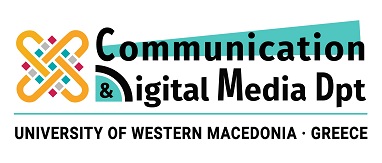CDM 1145 PRINCIPLES OF IMAGE CAPTURING AND EDITING
1st semester
LEVEL OF STUDY: UNDERGRADUATE
COURSE UNIT CODE: CDM 1145
SEMESTER: 1st
COURSE TITLE: PRINCIPLES OF IMAGE CAPTURING AND EDITING
TEACHING WEEKLY HOURS: 2 H/W LECTURES and 2 H/W LAB EXERCISES
ECTS: 5
COURSE TYPE: CORE COMPULSORY
TEACHING AND EXAM LANGUAGE: GREEK
COURSE DELIVERY TO ERASMUS STUDENTS: YES (in English through project work)
The purpose of the course is to cover the theory and important developments related to digital imaging for communication needs. Students will be taught the role of photography and digital images in modern media such as online services, social networks, digital storytelling, interactive multimedia etc.
The course focuses on how digital cameras work, photography techniques, digital image file types and their characteristics (format, dimensions, size calculation, etc.), color models etc. Special emphasis will be given to laboratory exercises on image editing techniques using appropriate software packages (commercial and open source).
Upon the successful completion of the course the students will be able to:
- To analyze the role of photography in storytelling and journalism, marketing and communication.
- To thoroughly understand how cameras work, the types of cameras that exist in the market and other auxiliary equipment. The students will also learn to apply basic principles of photography in order to capture images that can be used for communication purposes.
- To have basic knowledge about the image file types and characteristics, the factors that affect the image size, image size calculation, compression techniques, color models, differences between vector and bitmap graphics.
- To efficiently use image editing techniques in order to produce images for communication purposes
- To create Photo-Storytelling projects
- To understand the role of images in today’s evolving web environment (i.e. social media platforms) and in the development of emerging multimedia technologies (e.g. augmented reality).
- To examine and select suitable techniques for embedding images in various web and Multimedia platforms.
